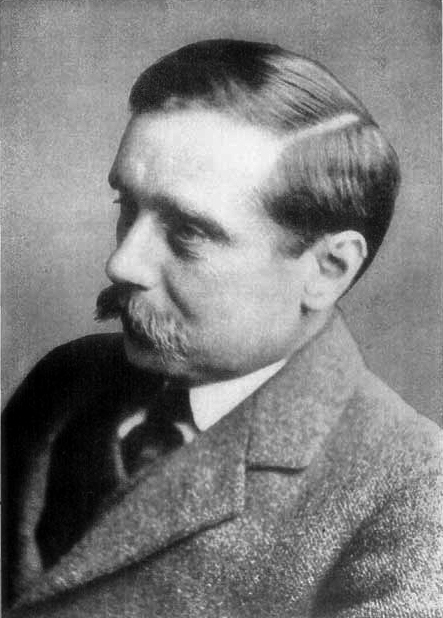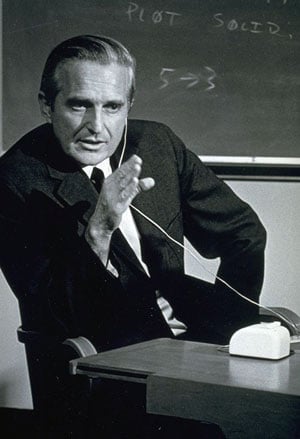Titans of Hypermedia
Key contributors to the rise of hypermedia to be covered in the course of the book’s narrative.
H.G. Wells’ proposal for an Authoritative World Encyclopedia (and his attempt to fund its development) anticipated the eventual global ubiquity of access to knowledge through new kinds of media.
Bush’s August 1945 article, As We May Think, set out the goal of building a desk-like Memex, and anticipated the need for linking documents and user-created connections through what he called “associative indexing.”
Licklider’s has been called the “Johnny Appleseed” of interactive computing because of his central role in launching a series of projects that eventually gave rise to the Internet and global hypermedia.
Engelbart’s pioneering work in human augmentation and human-computer interaction led to his invention of, among other things, the mouse and windows-based computing.
Nelson invented the modern concept of hypertext after anticipating how the rise of ubiquitous computing could extend Vannevar Bush’s concept of associative indexing into all creative media.
Berners-Lee created the World Wide Web by leveraging the rise of the Internet and Nelson’s seminal concepts of hypermedia, but with a strategic piecemeal approach that started with hyper-linking, expecting that the missing elements of hypermedia would evolve into place later.
Andreessen’s invention of the Mosaic web browser made the Web far easier to access and therefore made the Web seem fun and user friendly, sparking the Internet boom of the mid and late 1990s.
Postel, known as the “Czar of the Internet,” was a central figure in the creation of Internet technical standards and the administration of its key resources, and insisted on the sharing of authority among accountable “responsible parties.”
Bezos mastery of leveraging the Internet and the Web as platforms for content set the stage for the Web’s evolution from hyper-linking to hyper-mixing.
Mark Zuckerberg’s vision of “radical transparency” is overturning the document-based model of hypertext inherent in Berners-Lee’s design for the Web, pioneering the transition from hyper-mixing to hyper-sourcing.








